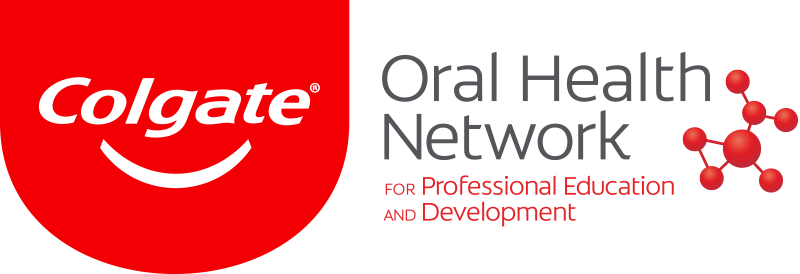SAN JUAN, Puerto Rico/SPRING, Texas, U.S.: Mercury in dental amalgam is a hidden source of global mercury pollution, resulting from factors such as the illegal diversion of dental mercury into the artisanal and small-scale gold mining industry, crematoria emissions from the deceased and sewage sludge that is sold to farmers. These significant mercury sources result in air, water and food contamination that consequently have a negative impact on human health. The aim of a recent study was to investigate and report on all of the various pathways of mercury in dental amalgam into the environment.
According to the United Nations Environment Programme, dental amalgam represents over 20% of the global mercury used in products. The Minamata Convention on Mercury is now in force, 110 countries of the 128 signatories having ratified the treaty. Countries are now working on implementation for treaty compliance.
Dental amalgam has been listed as a phase-down product in the Minamata Convention. The nine provisions are listed below:
(i) setting national objectives aiming at dental caries prevention and health promotion, thereby minimizing the need for dental restoration;
(ii) setting national objectives aiming at minimizing its use;
(iii) promoting the use of cost-effective and clinically effective mercury-free alternatives for dental restoration;
(iv) promoting research and development of quality mercury-free materials for dental restoration;
(v) encouraging representative professional organizations and dental schools to educate and train dental professionals and students on the use of mercury-free dental restoration alternatives and on promoting best management practices;
(vi) discouraging insurance policies and programs that favor dental amalgam use over mercury-free dental restoration;
(vii) encouraging insurance policies and programs that favor the use of quality alternatives to dental amalgam for dental restoration;
(viii) restricting the use of dental amalgam to its encapsulated form;
(ix) promoting the use of best environmental practices in dental facilities to reduce releases of mercury and mercury compounds to water and land.
The environmental impact that is caused by dental amalgam has been discussed within the text of the treaty, and factors such as sewage sludge, cremation, burial, human waste, and artisanal and small-scale mining are mentioned. However, there has been little research on the topic. According to the authors of the study, they believe that it is the first paper to address all of the pathways through which mercury from dental amalgam enters the environment as a cradle-to-grave deadly pollutant. They also stated that significant mercury pollution from cremation is growing owing to various factors. Cremation is less expensive than burial and is favored because of population density and lack of burial space. This increase in cremation is happening globally.
Another area of serious concern is sewage sludge. The European Federation of National Associations of Water Services advocated a ban on dental amalgam in order to decrease mercury in the sludge from wastewater treatment plants. They noted that the major source of the mercury in wastewater in most treatment plants in the EU is from dental amalgam. Dental amalgam will be a major topic of discussion at the upcoming third meeting of the Conference of the Parties to the Minamata Convention on Mercury, to be held in November. Since the EU has mandated a ban on using dental amalgam for children under 15, pregnant women and breastfeeding women, it is expected that other countries will follow.
The study, titled “Mercury contamination from dental amalgam”, was published in the June 2019 issue of the Journal of Health and Pollution.
Tags:
LONDON, UK: Though the exact number of people who suffer from xerostomia is unclear, some studies estimate that as many as one in five of the population ...
BLOOMFIELD, Conn., U.S: Cigna, a worldwide health services organization, has recently released a study that helps confirm the connection between oral health...
GENEVA, Switzerland: The COVID-19 pandemic caused fatigue, frustration and emotional exhaustion among healthcare workers. This is evident in a new report ...
LONDON, UK: As the statutory regulator for all dental professionals across the UK, the General Dental Council’s (GDC’s) main aim is to maximise patient ...
SHANGHAI, China: Given that SARS-CoV-2 originated in China, it is understandable that the nation’s emergency dental care providers have experienced an ...
WASHINGTON, USA: The Environmental Protection Agency (EPA) has issued a final rule on the management of dental amalgam discharges into sewer systems. The ...
CHICAGO, US: Similarly to other dental professionals, dental hygienists have been put in the spotlight during the COVID-19 pandemic owing to the belief that...
AARHUS, Denmark: The effect a high-sugar diet can have on teeth is well documented; however, the effect it can have on periodontal health has not been as ...
NEW HAVEN, Conn., U.S.: With between 100 and 200 different strains of bacteria in the human mouth at any one time, the oral cavity can be a highly contested...
MALMÖ, Sweden: Even though Sweden has built a more robust healthcare system than exists in many countries, adults in the country still have a high ...
Live webinar
Tue. 6 August 2024
6:00 pm EST (New York)
Live webinar
Tue. 6 August 2024
8:00 pm EST (New York)
Dr. Cameron Shahbazian DMD MBA
Live webinar
Tue. 13 August 2024
7:00 pm EST (New York)
Live webinar
Wed. 14 August 2024
12:30 pm EST (New York)
Live webinar
Wed. 21 August 2024
9:00 am EST (New York)
Dr. Jim Lai DMD, MSc(Perio), EdD, FRCD(C)
Live webinar
Thu. 22 August 2024
4:00 pm EST (New York)
Live webinar
Wed. 28 August 2024
8:00 pm EST (New York)



 Austria / Österreich
Austria / Österreich
 Bosnia and Herzegovina / Босна и Херцеговина
Bosnia and Herzegovina / Босна и Херцеговина
 Bulgaria / България
Bulgaria / България
 Croatia / Hrvatska
Croatia / Hrvatska
 Czech Republic & Slovakia / Česká republika & Slovensko
Czech Republic & Slovakia / Česká republika & Slovensko
 France / France
France / France
 Germany / Deutschland
Germany / Deutschland
 Greece / ΕΛΛΑΔΑ
Greece / ΕΛΛΑΔΑ
 Italy / Italia
Italy / Italia
 Netherlands / Nederland
Netherlands / Nederland
 Nordic / Nordic
Nordic / Nordic
 Poland / Polska
Poland / Polska
 Portugal / Portugal
Portugal / Portugal
 Romania & Moldova / România & Moldova
Romania & Moldova / România & Moldova
 Slovenia / Slovenija
Slovenia / Slovenija
 Serbia & Montenegro / Србија и Црна Гора
Serbia & Montenegro / Србија и Црна Гора
 Spain / España
Spain / España
 Switzerland / Schweiz
Switzerland / Schweiz
 Turkey / Türkiye
Turkey / Türkiye
 UK & Ireland / UK & Ireland
UK & Ireland / UK & Ireland
 Brazil / Brasil
Brazil / Brasil
 Canada / Canada
Canada / Canada
 Latin America / Latinoamérica
Latin America / Latinoamérica
 USA / USA
USA / USA
 China / 中国
China / 中国
 India / भारत गणराज्य
India / भारत गणराज्य
 Japan / 日本
Japan / 日本
 Pakistan / Pākistān
Pakistan / Pākistān
 Vietnam / Việt Nam
Vietnam / Việt Nam
 ASEAN / ASEAN
ASEAN / ASEAN
 Israel / מְדִינַת יִשְׂרָאֵל
Israel / מְדִינַת יִשְׂרָאֵל
 Algeria, Morocco & Tunisia / الجزائر والمغرب وتونس
Algeria, Morocco & Tunisia / الجزائر والمغرب وتونس
 Middle East / Middle East
Middle East / Middle East
:sharpen(level=0):output(format=jpeg)/up/dt/2024/07/Study-evaluates-primary-personality-types-among-dental-students.jpg)
:sharpen(level=0):output(format=jpeg)/up/dt/2024/07/Shutterstock_2330040761.jpg)
:sharpen(level=0):output(format=jpeg)/up/dt/2024/07/file-7.jpg)
:sharpen(level=0):output(format=jpeg)/up/dt/2024/07/Our-commitment-to-digital-dentistry-is-a-cornerstone-of-our-strategy.jpg)
:sharpen(level=0):output(format=jpeg)/up/dt/2024/07/Shutterstock_1051488260.jpg)








:sharpen(level=0):output(format=png)/up/dt/2024/05/Curaden_Logo_RGB1.png)
:sharpen(level=0):output(format=png)/up/dt/2022/06/RS_logo-2024.png)
:sharpen(level=0):output(format=png)/up/dt/2022/05/osstem_logo.png)
:sharpen(level=0):output(format=png)/up/dt/2014/02/Planmeca.png)
:sharpen(level=0):output(format=png)/up/dt/2011/11/ITI-LOGO.png)
:sharpen(level=0):output(format=png)/up/dt/2014/02/MIS.png)
:sharpen(level=0):output(format=jpeg)/up/dt/2019/07/Recent-study-reveals-the-impact-of-dental-amalgam-on-the-environment_780-x-439.jpg)

:sharpen(level=0):output(format=jpeg)/up/dt/2024/07/Study-evaluates-primary-personality-types-among-dental-students.jpg)
:sharpen(level=0):output(format=jpeg)/up/dt/2017/01/b3e272bb6b7d20e7961407ceee292405.jpg)
:sharpen(level=0):output(format=jpeg)/up/dt/2019/08/shutterstock_562063873.jpg)
:sharpen(level=0):output(format=jpeg)/up/dt/2019/12/Survey-reveals-impact-of-healthy-teeth-on-well-being.jpg)
:sharpen(level=0):output(format=jpeg)/up/dt/2023/04/New-report-by-WHO-reveals-impact-of-COVID-19-on-healthcare-professionals.jpg)
:sharpen(level=0):output(format=jpeg)/up/dt/2022/06/shutterstock_1535122274.jpg)
:sharpen(level=0):output(format=jpeg)/up/dt/2021/06/shutterstock_1687243240.jpg)
:sharpen(level=0):output(format=jpeg)/up/dt/2017/09/new-website-amalgam-1-of-1.jpg)
:sharpen(level=0):output(format=jpeg)/up/dt/2022/03/Study-sheds-light-on-impact-of-COVID-19-pandemic-on-dental-hygienists.jpg)
:sharpen(level=0):output(format=jpeg)/up/dt/2020/02/Study-of-50-years-of-literature-on-periodontitis-reveals-obvious-link.jpg)
:sharpen(level=0):output(format=jpeg)/up/dt/2018/07/bacteria-1-of-1.jpg)
:sharpen(level=0):output(format=jpeg)/up/dt/2022/09/Study-finds-clinic-leadership-has-direct-impact-on-level-of-preventive-care1.jpg)






:sharpen(level=0):output(format=jpeg)/up/dt/2024/07/Study-evaluates-primary-personality-types-among-dental-students.jpg)
:sharpen(level=0):output(format=jpeg)/up/dt/2024/07/Shutterstock_2330040761.jpg)
:sharpen(level=0):output(format=jpeg)/up/dt/2024/07/file-7.jpg)
:sharpen(level=0):output(format=jpeg)/wp-content/themes/dt/images/3dprinting-banner.jpg)
:sharpen(level=0):output(format=jpeg)/wp-content/themes/dt/images/aligners-banner.jpg)
:sharpen(level=0):output(format=jpeg)/wp-content/themes/dt/images/covid-banner.jpg)
:sharpen(level=0):output(format=jpeg)/wp-content/themes/dt/images/roots-banner-2024.jpg)
To post a reply please login or register